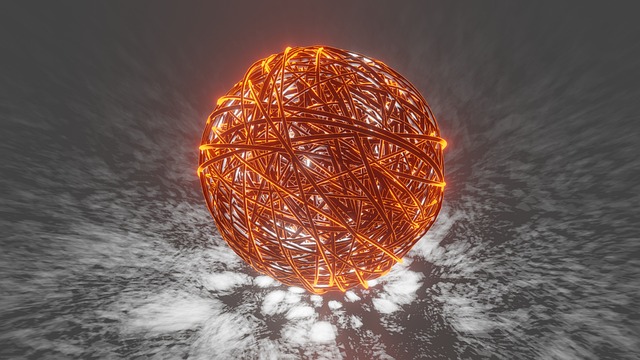Nanotechnology Innovations in Healthcare and Materials Science

Nanotechnology, the science of manipulating matter at the atomic and molecular scale, has revolutionized various industries, including healthcare and materials science. This groundbreaking field has opened up a world of possibilities, enabling scientists and researchers to develop innovative solutions that can have a profound impact on our lives.

In healthcare, nanotechnology has paved the way for remarkable advancements. One of the most exciting applications is in targeted drug delivery. Imagine a scenario where medication could be directly delivered to the affected cells, minimizing side effects and maximizing efficacy. Nanoparticles can be engineered to carry drugs and specifically target cancer cells, for instance, thereby enhancing treatment outcomes and improving the quality of life for patients.
Furthermore, nanotechnology has shown great promise in diagnostics. Nano-based biosensors can detect diseases at an early stage, expediting diagnosis and enabling timely interventions. These sensors are incredibly sensitive, capable of detecting even the tiniest traces of disease markers in blood or other bodily fluids. Such early detection can significantly improve patient outcomes and survival rates.

In the realm of materials science, nanotechnology has unlocked a treasure trove of possibilities. By manipulating materials at the nanoscale, scientists can create materials with exceptional properties. For example, nanoparticles can be incorporated into coatings to make them superhydrophobic, repelling water and preventing corrosion. Similarly, nanomaterials can enhance the strength and durability of construction materials, making buildings safer and more resilient.
Moreover, nanotechnology has contributed to the development of flexible electronics, which have revolutionized wearable technology. Think of flexible displays, smart clothing, or even electronic tattoos. These innovations blend seamlessly with our daily lives, offering convenience, comfort, and functionality.
Revolutionizing Healthcare: Nanotechnology Breakthroughs Transform Diagnosis and Treatment

Did you ever imagine a time when tiny particles could revolutionize the healthcare industry? Well, that future is closer than you think. Enter nanotechnology, a groundbreaking field that is transforming the way we diagnose and treat diseases. In this article, we will explore the incredible potential of nanotechnology to revolutionize healthcare as we know it.
Nanotechnology operates on an unbelievably small scale, working with materials and devices at the nanometer level. To put things into perspective, one nanometer is equivalent to one billionth of a meter – that’s smaller than the width of a human hair! This manipulation of matter at such a minuscule level opens up a whole new world of possibilities in medicine.
Thanks to nanotechnology, diagnostics have become more accurate and efficient than ever before. Imagine a smart nanoparticle capable of detecting specific biomarkers in the body that indicate the presence of a disease. These nanoparticles can be administered to patients through non-invasive methods, such as oral intake or inhalation. Once inside the body, they navigate through the bloodstream, seeking out diseased cells or molecules. This targeted approach allows for early detection of diseases like cancer or cardiovascular conditions, enabling prompt and precise interventions.

Furthermore, nanotechnology has transformed treatment options by delivering drugs directly to their intended targets. Traditional drug delivery methods often result in systemic side effects and limited effectiveness. However, nanotechnology enables the development of nanocarriers that can transport drugs precisely where they are needed, minimizing damage to healthy tissues. These carriers can release the medication over time or respond to specific triggers within the body, ensuring optimal therapeutic outcomes.
In addition to diagnostics and drug delivery, nanotechnology offers innovative solutions for tissue engineering and regenerative medicine. Scientists are now able to create synthetic scaffolds at the nanoscale that mimic the structure of human tissues. These scaffolds serve as a framework for cells to grow and regenerate damaged organs or tissues. With the help of nanotechnology, the possibilities for organ transplantation and tissue repair are expanding, providing hope for patients in need.
Nanotechnology has the potential to revolutionize healthcare by transforming diagnosis and treatment methods. Through the use of nanoparticles, doctors can detect diseases at an early stage and administer treatments directly to affected areas, improving patient outcomes and minimizing side effects. Additionally, nanotechnology opens up new avenues for tissue engineering and regenerative medicine, bringing us closer to a future where damaged organs can be repaired or replaced. As we continue to unlock the full potential of nanotechnology, the possibilities for advancements in healthcare are truly awe-inspiring.
Tiny Marvels: How Nanotechnology is Changing the Face of Medicine and Material Science
Introduction:
Have you ever wondered how something as tiny as a nanoparticle could have such a huge impact on the fields of medicine and material science? Welcome to the world of nanotechnology, where the tiniest marvels are making a big difference. In this article, we’ll explore the fascinating realm of nanotechnology and delve into how it is transforming the face of medicine and material science.
Unleashing the Power of Nanotechnology:
Nanotechnology involves manipulating matter at the nanoscale, which is about 1 to 100 nanometers in size (for reference, a human hair is roughly 80,000 to 100,000 nanometers wide). By harnessing the unique properties nanoparticles possess at this scale, scientists and researchers are unlocking a whole new realm of possibilities.
Revolutionizing Medicine:
In the field of medicine, nanotechnology is enabling breakthroughs that were once unimaginable. One compelling application is in targeted drug delivery. Using nanoparticles as carriers, medications can be delivered directly to specific cells or tissues, maximizing their effectiveness while minimizing side effects. This precision has the potential to revolutionize treatments for diseases like cancer, where targeted therapies hold great promise.
Furthermore, nanotechnology is paving the way for advanced diagnostic tools. Nanosensors capable of detecting disease markers at an early stage are being developed, offering quicker and more accurate diagnoses. Imagine a future where diseases can be detected before symptoms even appear, allowing for timely interventions and improved outcomes.
Transforming Material Science:
Beyond medicine, nanotechnology is reshaping the world of material science. By engineering materials at the nanoscale, their properties can be fine-tuned to achieve remarkable characteristics. For example, carbon nanotubes are exceptionally strong yet incredibly lightweight, making them ideal for building materials and aerospace applications. Graphene, a single layer of carbon atoms, exhibits extraordinary electrical conductivity, revolutionizing electronics and energy storage devices.
Nanotechnology is also driving advancements in renewable energy. Nanoscale materials are enhancing the efficiency of solar cells, enabling them to convert sunlight into electricity more effectively. Additionally, nanomaterials are being used to develop lightweight and flexible batteries with higher energy density, powering portable electronics and electric vehicles.
Conclusion:
Unleashing the Power of Nanotech: Advancements in Healthcare and Materials Science
Unlocking the potential of nanotechnology has revolutionized the realms of healthcare and materials science, paving the way for groundbreaking advancements that once seemed straight out of science fiction. By harnessing the remarkable properties of nanoparticles at the atomic and molecular level, scientists are reshaping our understanding and applications of medicine and materials.
In healthcare, nanotechnology holds immense promise for diagnostics, treatment, and drug delivery. With their tiny size, nanoparticles can navigate the intricate pathways of the human body, enabling targeted therapy and precise diagnosis. Picture a swarm of nanobots, each one armed with a specific task, diligently seeking out cancer cells and delivering therapeutic agents directly to the source, all while leaving healthy cells unharmed. This precision medicine approach minimizes side effects and maximizes efficacy, bringing us closer to personalized treatments tailored to each individual’s unique biological makeup.

Moreover, nanotech has also opened doors in regenerative medicine. Imagine damaged tissues being repaired as if by magic, thanks to scaffolds made from biocompatible nanomaterials that mimic the natural environment. These nanoscale structures provide a supportive framework for cells to grow and regenerate, enabling the healing of wounds, tissue engineering, and even organ transplantation in the not-so-distant future.
Beyond healthcare, nanotechnology is transforming the field of materials science. By manipulating materials at the nanoscale, scientists can engineer substances with enhanced properties and functionalities. Take carbon nanotubes, for example. These cylindrical structures, with a diameter thousands of times smaller than a human hair, possess extraordinary strength and conductivity. They have the potential to revolutionize industries ranging from electronics to energy storage, with applications in flexible displays, high-performance batteries, and lightweight yet robust materials.
The integration of nanotechnology into various industrial sectors is rapidly expanding as well. From self-cleaning coatings that repel dirt and water to ultra-strong and lightweight composite materials, nanotech is reshaping the way we design and manufacture products, making them more efficient, durable, and sustainable.
From Lab to Life: Nanotechnology Paves the Way for Cutting-Edge Medical Breakthroughs
Have you ever wondered how scientific discoveries in the laboratory make their way into our everyday lives? One such groundbreaking field that holds immense potential is nanotechnology. With its minuscule scale and enormous possibilities, nanotechnology is revolutionizing the medical industry, opening doors to cutting-edge breakthroughs that were once mere science fiction.
Nanotechnology involves manipulating matter at the atomic and molecular level, allowing scientists to engineer materials and devices with incredible precision. This technology has found its way into various medical applications, transforming diagnostics, treatment methods, and even drug delivery systems.
Imagine a future where diseases can be detected at their earliest stages, even before symptoms manifest. Nanotechnology is making this a reality through the development of highly sensitive diagnostic tools. By leveraging nanoparticles, scientists can create biosensors that quickly and accurately detect biomarkers associated with specific diseases. These bio-inspired sensors could potentially revolutionize early disease detection, enabling timely intervention and improving patient outcomes.
But the impact of nanotechnology doesn’t stop there. It’s also paving the way for targeted therapies, where medications are precisely delivered to affected areas without harming healthy tissue. Traditional treatments often come with side effects due to their non-specific nature. However, nanotechnology offers a solution by designing nanoparticles that can carry drugs directly to the target site. This approach improves treatment efficacy while minimizing adverse reactions, offering hope for more effective and personalized medicine.
Furthermore, nanotechnology holds promise in regenerative medicine, where damaged tissues or organs can be regenerated or repaired. Scientists are exploring the use of nanomaterials to stimulate cell growth and guide tissue regeneration. Imagine a world where spinal cord injuries are healed, or damaged organs are rejuvenated through the power of nanotechnology. It’s an awe-inspiring prospect that brings hope to millions around the globe.




